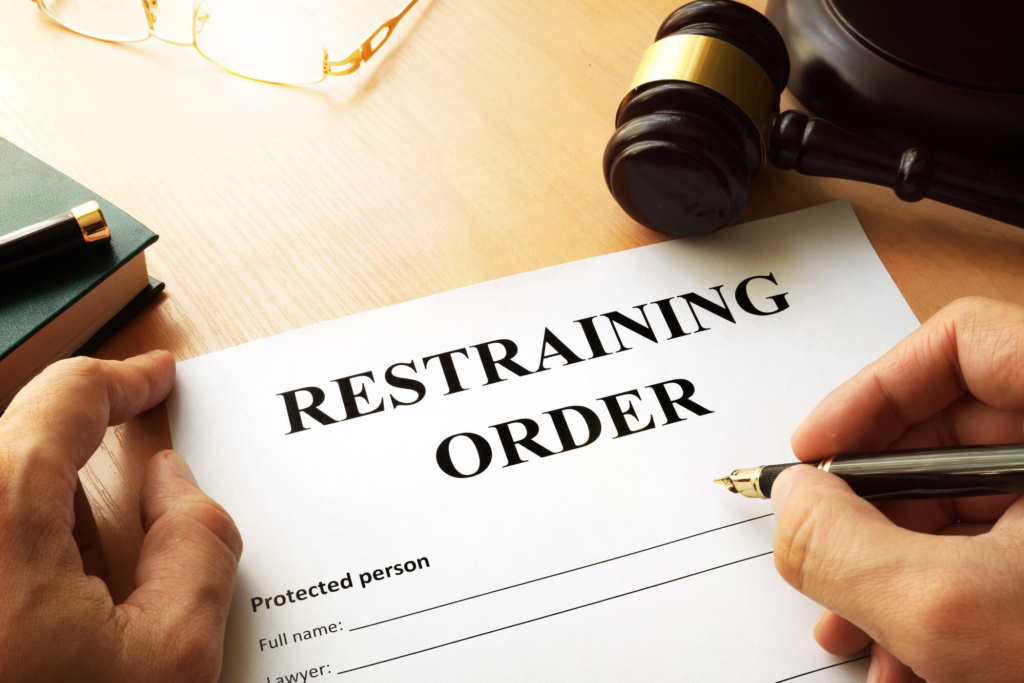As anyone could imagine, having a restraining order placed against you can be very limiting to your day-to-day life. They can be so particular that the same order placed on another person would have a different impact. The further apart you are from the person who filed the order against you, the less the direct imposition you may experience, sometimes to a point of no effect. However, there are times that you and the claimant may be unable to avoid each other—such as living in the same apartment complex or sharing a place of employment. In most severe cases, this order could result in being unable to go to your job or home.
It is important to note that though restraining orders are most commonly associated with domestic and marital disputes, however, they are not limited to that.

So, You Received a Restraining Order. Now What?
First and foremost—we cannot be stress this enough—do not violate the order! Even if the claimant is playing nice, it is still a legal order, and violation still carries repercussions, like fines or imprisonment and can be deemed contempt in civil court. Despite the inconvenience to your life, an order is an order.
Now that the most important “do not do” is out of the way, what should do you do? In Washington, you have two options: A motion or an appeal.
Motions that Apply to Restraining Orders
A motion is a formal request of the court. Depending on the circumstances, you have two motion options: motion to dissolve or motion to modify. File a motion to dissolve for the court to completely eliminate (or dissolve) the order, rendering it immediately void and not enforceable. This is the only path to dissolution as only a court can provide such. A motion to modify is a request to revise the order if it is too broad or burdensome. You’d use this motion if, for example, you and the claimant work in the same building. If approved, this motion would allow an easement for you to go to your job so long as other conditions are met.
Appealing a Restraining Order
Should the court issue you an extended order of protection, you can file an appeal to the district court. The court examines the documentation and evidence provided to the original court to determine if the original court made an error in applying or enforcing the law as it was presented to them. Take your time to gather all of the best evidence you can for that hearing. The district court can uphold, modify or dissolve the order.
First Steps to Fighting a Restraining Order
When an order is immediately issued, it is usually a short-term, temporary order intended to provide protection until the court can schedule a hearing to review the case, usually between a week and a month from the date of the filing. That hearing will be your first and best chance to fight the order.
To really improve your odds, retain an attorney. He or she will help you prepare your case before the hearing. While the court may be required to provide you with a defense attorney for the criminal matter, the majority of the protection order is based on the civil side of interactions, and you are not entitled to a free attorney for civil matters even if indigent. If you can not afford an attorney, reach out to your local Legal Aid Society for guidance.
Before the hearing, assemble any evidence that you can to support your side. You’ll want compelling pieces like witness testimony, police, or medical reports, and records of all communication, including texts, emails, and messages on social media. (Yes, texts are considered proof of conversation.) It will be on you to prove that the claimant has no cause for concern of his/her safety around you now or in the future.
It is All Up To the Court
After the hearing to fight the restraining order, the judges have the final say in whether or not a protective order is lifted. Even if your evidence is concise, you have a strong testimony in your favor, and, in some cases, a request to drop the order from the claimant, you still may not get the answer you wanted. Everything that led up to the order being filed will be considered. Should the court feel that the claimant is in danger, even if the claimant strongly disagrees, there is a chance that the court could still uphold the order for a long-term or permanent basis. Retaining an attorney who is familiar with the ins and outs of your courts makes the difference between living your life freely versus the risk of revolving your life around someone else’s daily schedule.
Leyba Defense has experienced attorneys to help you fight a restraining order, contact us today for a consultation.
